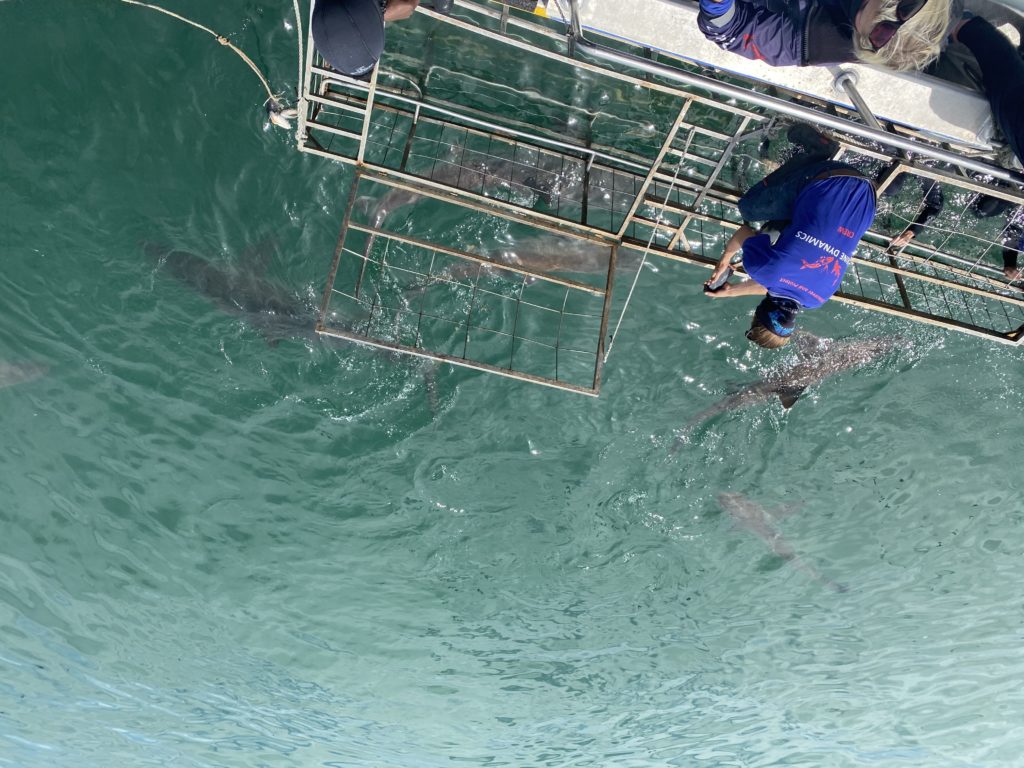Duh-dum, duh-dum, duh-dum. These simple notes came to define how humans see sharks, instilling fear that getting into the water means you will be attacked. While it may not have been the famous film’s intention, correcting the image of the shark as an aggressive man-eater has been no simple feat. One group hoping to do this through a mixture of conservation, education and tourism are Marine Dynamics in Gansbaai.
As part of an excursion planned by Wine Flies tours, I woke up early on a Saturday to make the 2-hour-long drive to Gansbaai, the most famous spot in the world for shark cage diving. Although I have never been very scared of sharks, the idea of possibly having one of the famous great whites swim within metres of me had got me a bit on edge.
I had my reservations about shark cage diving, as it has been the centre of some ethical discussions. On doing a bit more research it quickly became clear that Marine Dynamics are not just your standard tourist trap but rather a multi-faceted company which uses its tourist excursions, including shark cage diving and whale watching, to fund it’s research and conservation efforts in a non-threatening way.
This symbiosis became apparent from the moment we stepped through the doors at Marine Dynamics base, the Great White House. We were a little too enthusiastic so we arrived an hour early and were told we could go and have a look at the Penguin and Seabird Sanctuary, which is run as part of Dyer Island Conservation Trust by the company.
Free to enter, the sanctuary is home to penguins which have been injured and are recovering before being released or those who cannot be returned to the wild. We sipped a cup of coffee from the sanctuary cafe while reading about the re-homing efforts and being given insights into the birds we were watching behind the glass by Xolani Lawo, the Bird Rehabilitator.
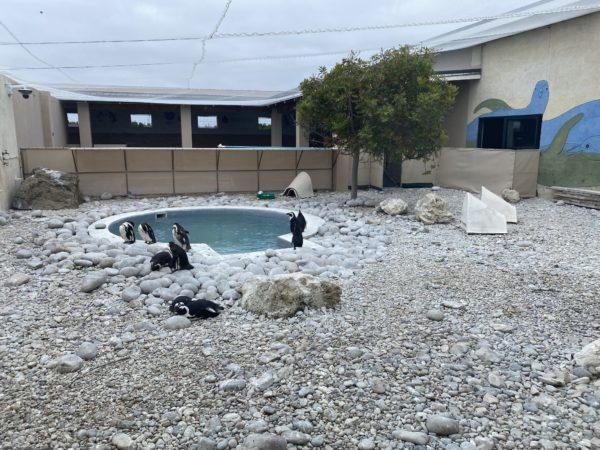
When it was time to go back and get ready for our trip, we were immediately greeted by our marine biologist who would be taking us on the trip and giving us all the facts about the sharks and marine life in the area.
After a quick briefing on how the trip would go and insight into how humans are continuing to impact negatively on shark populations, we were ready to put on our life jackets and head to our boat.
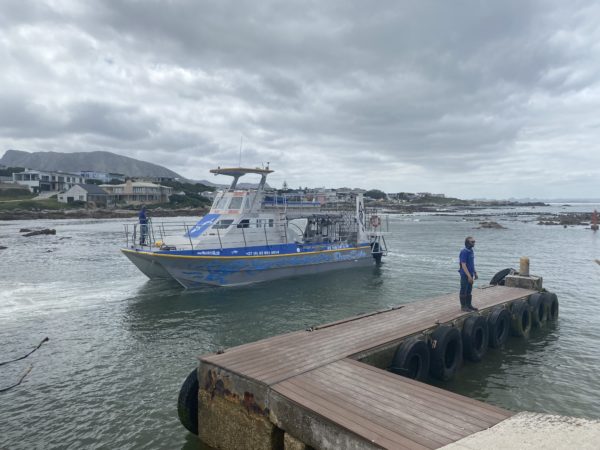
After picking a seat on the top balcony for the best view, the boat took a quick 15-minute trip to the spot where we would be likely to find the sharks we were looking for. We were warned that there hadn’t been a great white sighting since before lockdown. This ultimately made it a bit easier for me to get into the water as the bronze whalers we were expecting to see aren’t quite as large as the mighty great white.
Squeezing into a wetsuit on a rocking boat is not an easy job but once we were all suited up it was just a matter of waiting for the sharks to arrive. This didn’t take long and soon we were given a weight belt and mask so we could climb into the cage and get to watching these incredible creatures up close.
The cage is quite small but we managed to get eight divers in. Although weighted down with a belt, it requires a bit of upper arm strength to pull yourself under the water to get the best view. Our guides would shout “down left” or “down right” depending on where the closest sharks were swimming.
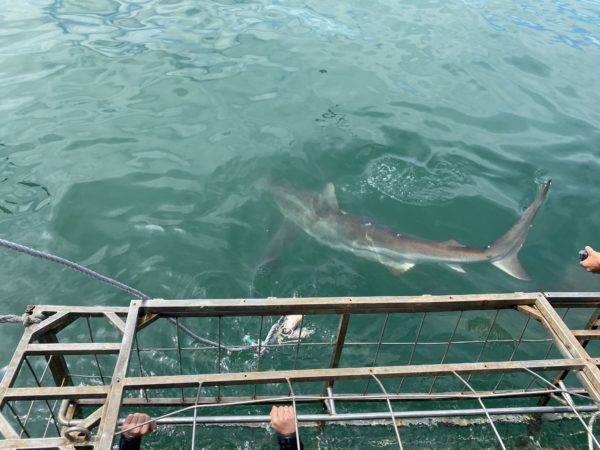
Within a few minutes, you feel like a pro, ducking beneath the water to get a glimpse of the slim body of the golden bronze whalers as they deftly swim past you. Once or twice the sharks didn’t quite turn in time which gave all the divers quite a thrill when they came very close to the cage.
After around 20 minutes, we were let out so others could get this fantastic experience. From the top deck, we could see there were about nine sharks all swimming around. Our marine biologist was explaining fascinating facts about this species and how they use these daily trips out to gather information about the sharks in the area. It has been through these trips that the Trust were able to more accurately identify how many great whites visit each year.
A glorious two hours later we were all shivering from our dip in the Atlantic and were off back to the Great White House for some warm soup and a debrief. The group, which had started off buzzing with adrenaline at the thought of swimming with sharks, was returning much calmer and with a little more understanding for these animals.
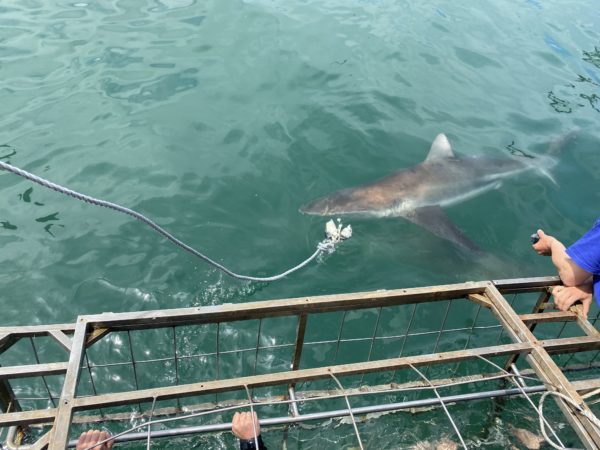
This trip really opened up an understanding of just how delicate the balance between our tourism and conversation industries are and how these two working together is the only way for each to succeed. It is important for these trips to do what Marine Dynamics is striving for, giving people the excitement they’re looking for without neglecting the education and conservation.
Picture/s: Leila Stein

